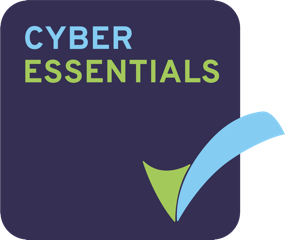That being said, there are a few little tricks to keep up your sleeve to help grease the wheels a bit. Especially if you’re making the transition from outbound to inbound, or even if you’re starting afresh as a new business, it can be hard to sit back and wait for the leads to roll in. There’s a lot of nail-biting going on, and you might want to put in a bit of stop-gap solution to tide you over until you are overwhelmed with a tidal wave of inbound leads.
So, without further ado (I’m sure you’re eager for me to get to the point so you can start getting some leads in) here are 3 ways to get a couple of cheeky quick wins from inbound or content marketing.
Use what you’ve got
If you’ve been in business for a while, chances are you’re already going to have some assets which are going to be useful. This could come in the form of content, subscribed contacts (be careful with this one – check out this article for more detail) or highly engaged customers. An audit of the assets you’ve already got within marketing is a good way to quick off your inbound strategy – it avoids duplication of work and allows you to get going on something quickly, with a bit of tweaking. That “useful guide to product x” someone wrote 3 years ago that’s stored on the drive somewhere? Hello conversion content! That list of people who subscribed to you that you never did anything with? Hello newsletter audience! Take stock of what you’ve got, and use it wisely. It could save you some time and help you uncover opportunities which were always there but you just haven’t seen because you were looking at them through a different lens.
Webinar-tastic!
We love a webinar. Webinars are a great way to cross-sell existing customers as well as making already warm prospects incredibly toasty. Even if you’re just starting out on the inbound journey, you’ll definitely have the expertise in-house to run a comprehensive session on one of your products or services. Using one of the aforementioned lists of subscribed prospects or customers, put together a targeted webinar that you think they’ll jump at the chance to sit on, and get them invited. Make sure you structure a nurture program around achieving a high percentage of attendance – you should expect anywhere upwards of a 20% drop-out rate between sign up and attending – and make a plan for effective follow-up. There are some really innovative tools out there now too to help you with your webinar strategy. Demio is an affordable webinar platform with an insanely handy “like live” feature – it automatically records all of your webinars, which you can then make available for people to run at any time. They still have to register, so you still capture their details, but it means that you can still get the most out of your content days, weeks and months after the webinar has ended. It’s also a great way to re-engage people who signed up for the webinar and didn’t attend, or visited your landing page and didn’t sign up.
PPC
Pay per click (PPC) is a bit of an odd for me. I can never decide if it’s classed as inbound activity, outbound activity, or a bit of both. Unlike its cousin SEO, there’s a lot more “proactivity” involved – it’s the modern-day equivalent of taking an ad out in a magazine, or paying for a billboard. Anyway, it’s a quick-win activity which doesn’t fall foul of GDPR, which a lot of outbound tactics could be about to. If you’ve got the budget, PPC can be a great way to inject a bit of life into your pipeline, as you have a bit more control over who can see your website in search results. PPC can get complex very quickly, but the best place to start is exactly the same way you’d start with inbound or an SEO strategy – decide on which keywords you want to use to drive people searching on Google towards your business. You’ll then need to use the Keyword Tool within AdWords to check on the suggested bids for each keyword, along with the search volume, to make sure it’s cost-effective to aim for those keywords. With a bit of careful planning and meticulous crafting of ad text which I won’t get into here, you’re ready to start driving a bit of awareness and traffic towards your website.
Fair warning here – PPC requires a bit of an investment to yield significant results. And I fully believe it does not work as a lead generation strategy all on its own. I’ve seen far too many a businesses pin all their hopes on PPC. Use it with your other marketing tactics as an accelerated campaign. Don’t rely on it.
Stay the course
Inbound marketing is most definitely a marathon, not a sprint – but with some of the tactics mentioned you can get a nice energetic start to your marathon. Remember though – these are just the first steps on your journey, even if they give you some short-term results. Stick with the wider strategy to see even better results further down the line.
If you would like help executing an inbound strategy or a more specific campaign, we can a help! Just get in touch, we love to chat.
